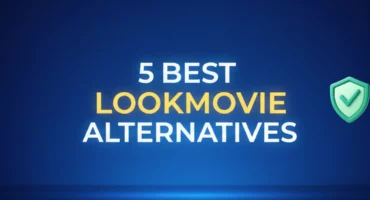How to Find Free WiFi Near Me and Safely Use It
If you have an urgent need to go online while being away from home, it’s not always an easy job to do. Even these days, when the Internet seems to be available almost everywhere in the Wi-Fi space, finding a Wi-Fi hotspot nearby can be challenging. Additionally, when you have succeeded in connecting to a free network, your online security may be at stake since unsecured public network may easily be attacked by hackers.
Wondering how to find free WiFi and stay safe while using it? Keep reading to find out!

How to get free WiFi?
There are many places where you can connect to free Wi-Fi, especially when living in a city. In fact, even rural areas mostly have at least several places with free Internet access to choose from.
However, it might still take a while to find a convenient place to go online when visiting a new location. Besides, you might need a free WiFi connection at home when facing issues with your router or Wi-Fi connectivity, for example.
There is no more time to lose, so now we can disclose some useful guidelines on how to locate a free WiFi everywhere.
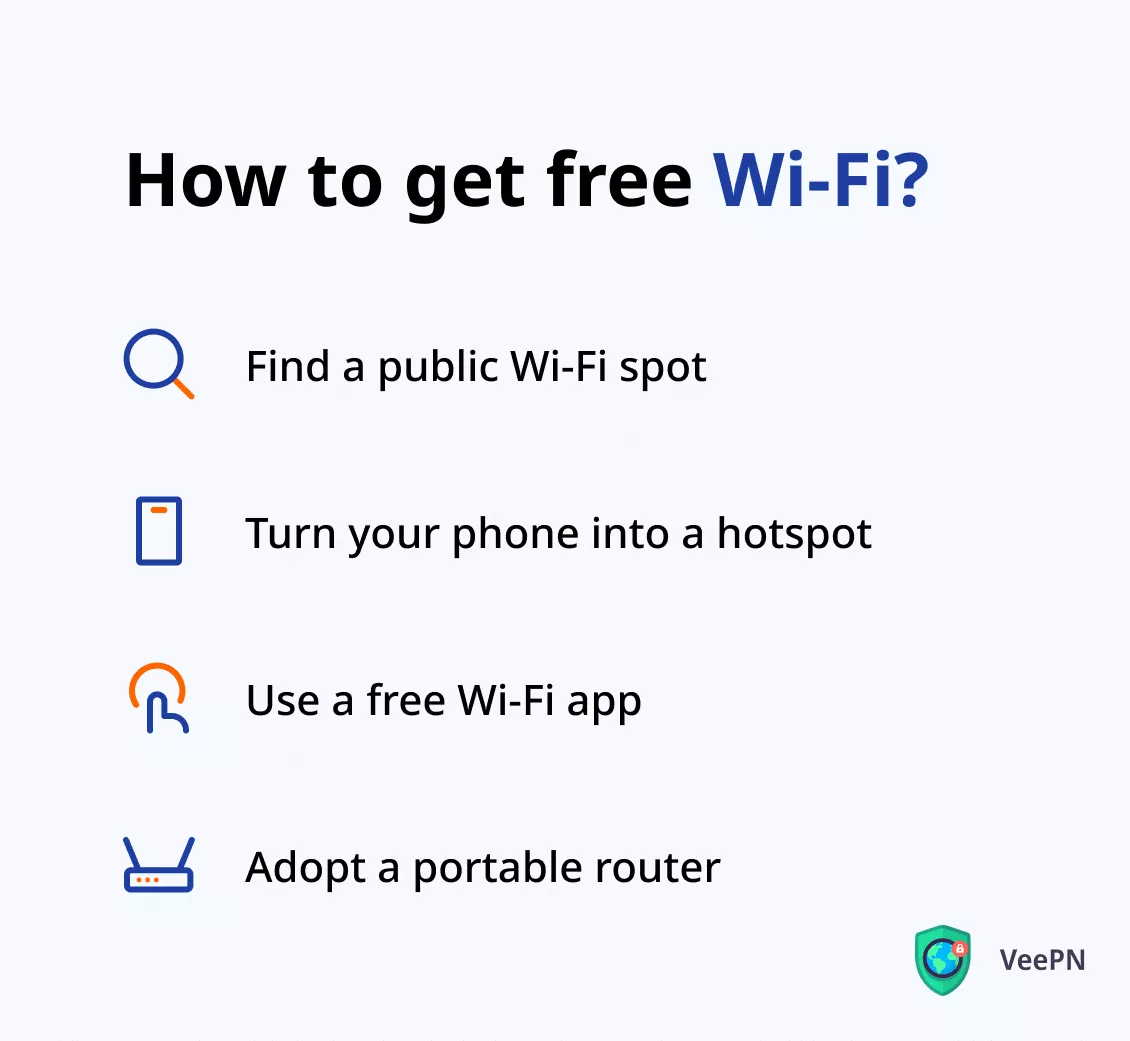
Find a public WiFi spot
First of all, you will need to search for a place with access to free Wi-Fi. Such hotspots can be found in cafes, coffee shops, restaurants, hotels, airports, public transport stations, libraries, and so on. Just do some research and find the most convenient locations with free Internet in your area.For example, big cities sometimes offer free Wi-Fi spots in the open air to please tourists.. And another thing, take into consideration public libraries, universities, and schools, where a password may have to be requested.
However, connecting to free Wi-Fi in public places is often insecure. Hackers can compromise even those Wi-Fi access points protected with a password. The possible dangers of using the public Wi-Fi hotspots are discussed in more detail in a minute.
Turn your phone into a hotspot
If you urgently need to go online but cannot find a free Wi-Fi spot, your mobile phone may save the day. 3G or 4G connection can help you out if you turn your phone into a personal hotspot and connect it to another device. However, keep in mind that mobile data has limited connectivity. You can use it to respond to an email, google something, or shop online. However, it won’t be enough for gaming or streaming media.
This is how your iOS or Android phone can be converted to a hotspot.
Android
- Open Wireless & networks in your phone settings
- Tap on Tethering & portable hotspot
- Select Portable Wi-Fi hotspot
- Create a strong password and enable your hotspot
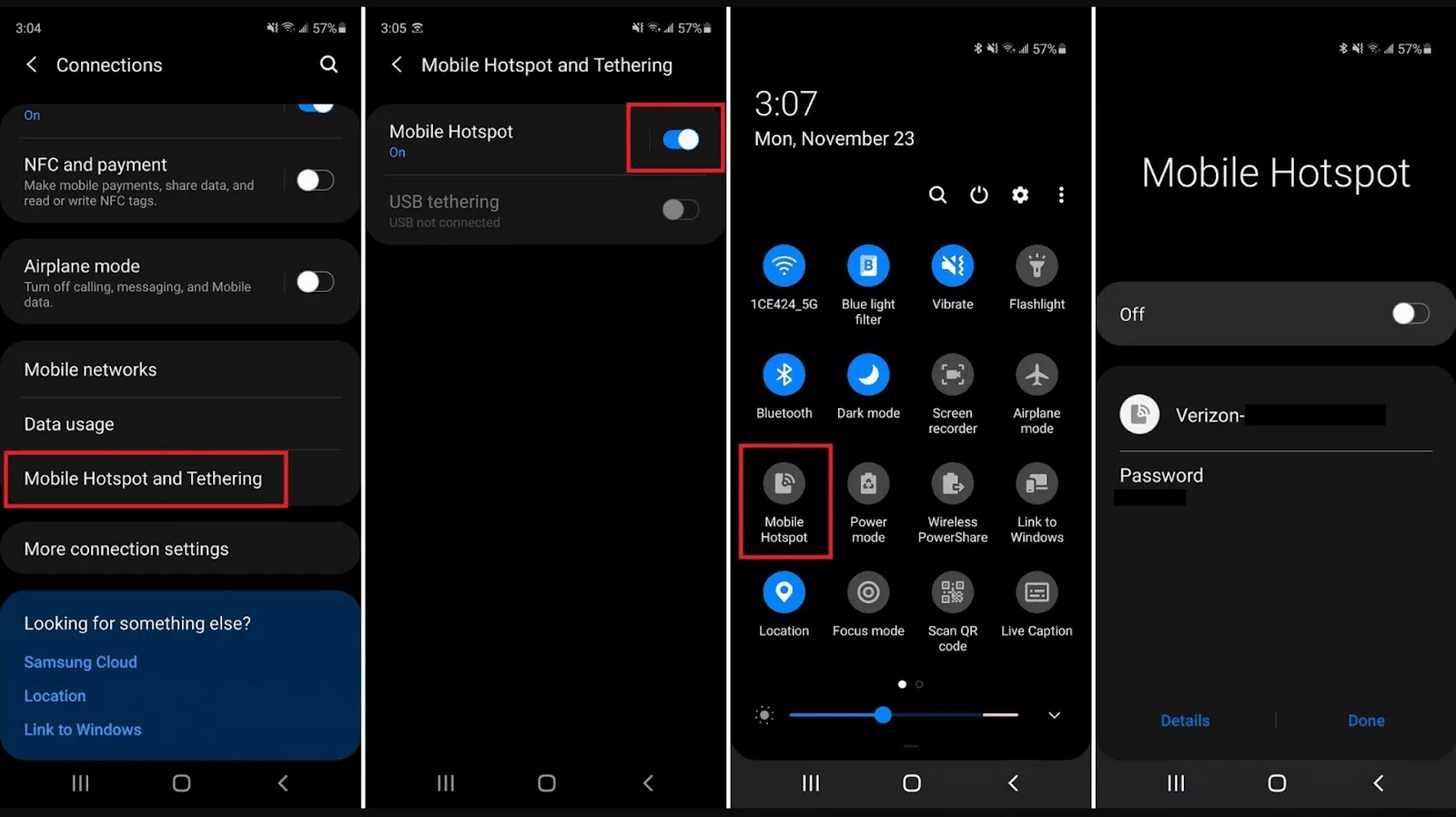
iOS
- Open settings on your iPhone and head to Personal WiFi Hotspot
- Create a strong password
- Enable the Allow others to join option
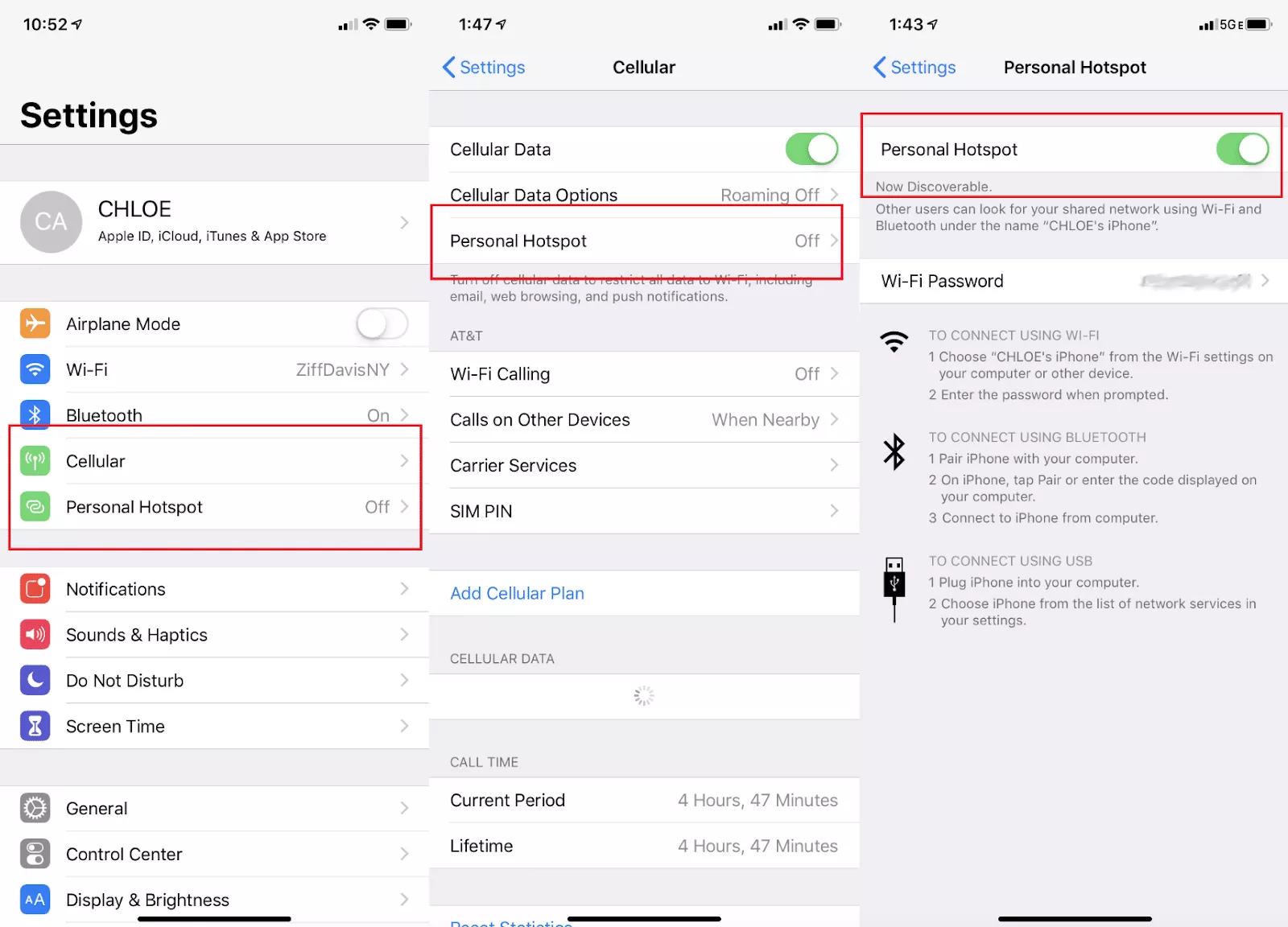
Use a free Wi-Fi app
If you don’t want to waste time looking for a place with free Wi-Fi, you can take advantage of a dedicated Wi-Fi map application. “Wi-Fi near me” apps allow you to find the desired location hassle-free. Most of these tools also provide passwords for free Wi-Fi networks if required.
Here are several most popular examples you may choose from.
- WiFi Finder. This option informs you only about verified Wi-Fi spots. It works both on Android and iOS and shows nearly 2 million hotspots in 50,000 cities worldwide.
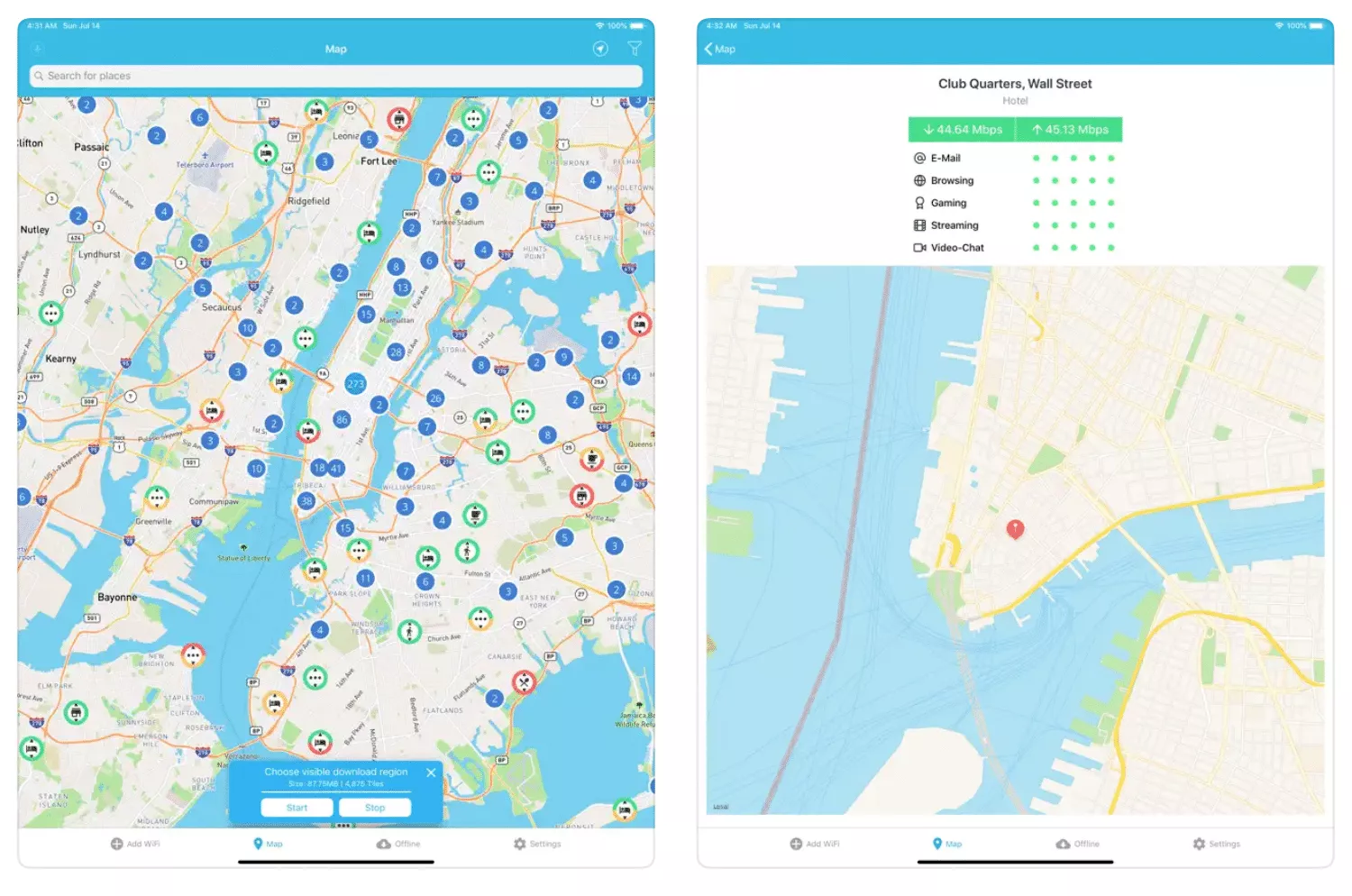
- WiFi Map. It’s a “crowdsourced” app, which means it’s constantly tested and updated by real users. With this app, you can easily find a WiFi spot when traveling overseas. It includes information about over 100 million hotspots in 200 countries.
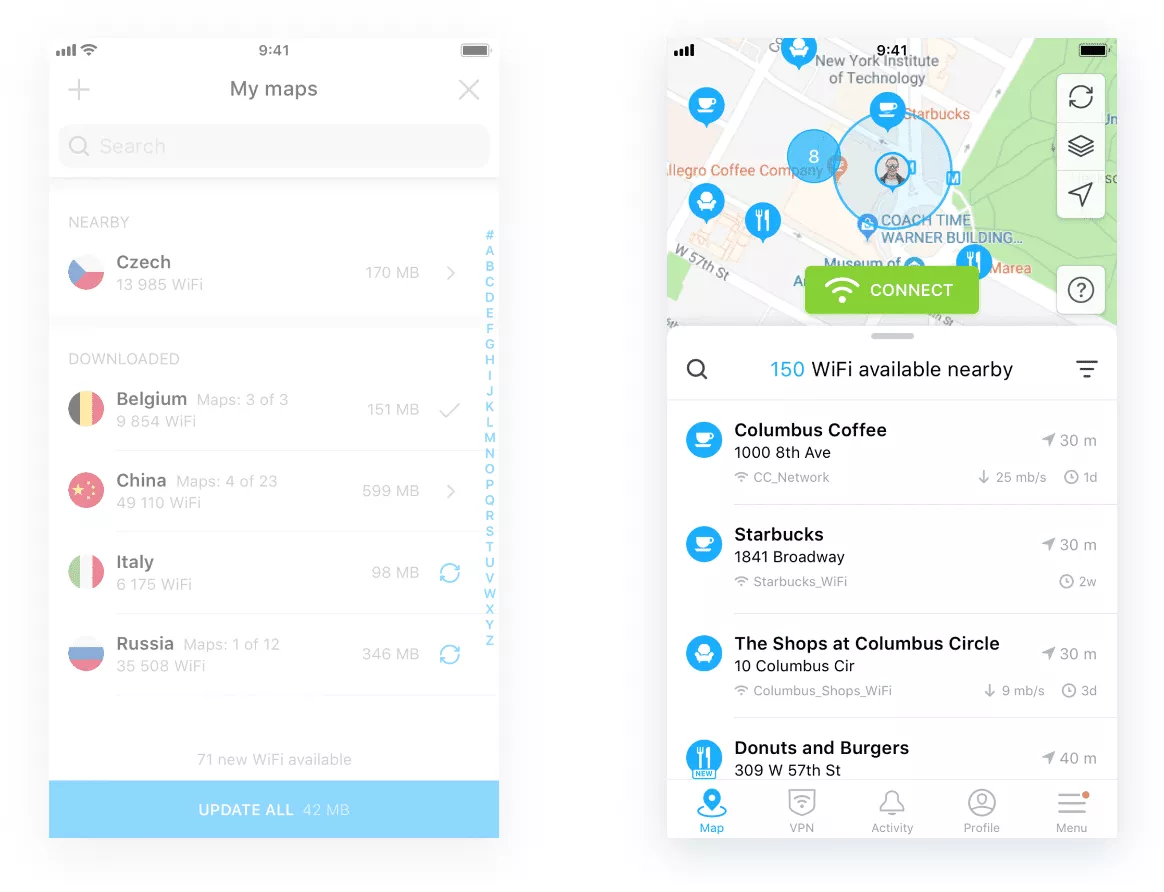
- Instabridge. Instabridge provides users with passwords for the chosen networks. It also has a handy feature that can automatically connect your phone to the nearest Wi-Fi hotspot.
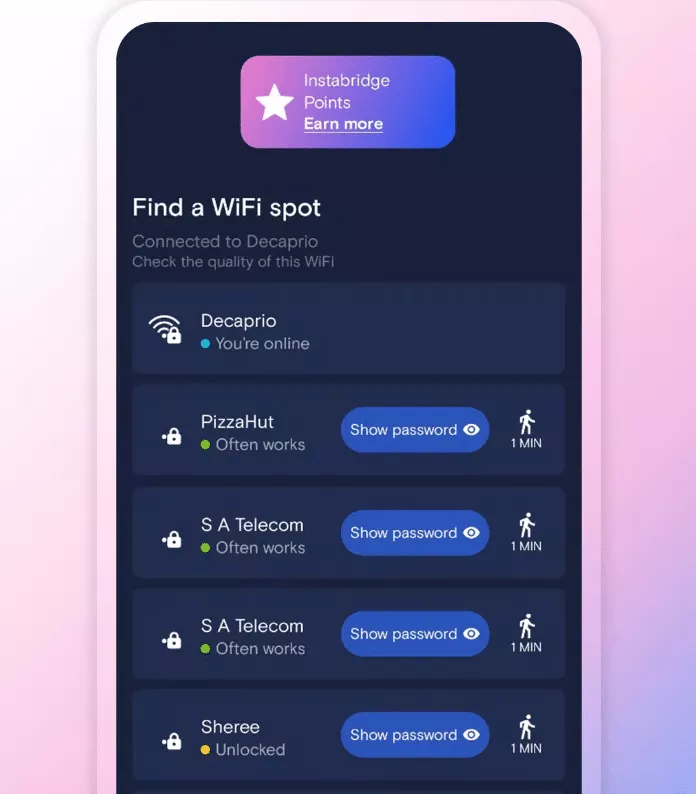
Adopt a portable router
A portable router is a device that works like a common Wi-Fi router, but uses a 3G or 4G connection instead of a cable, which makes this option more secure than free Wi-Fi hotspots. It’s a small gadget that fits easily in your pocket or bag. Moreover, a long-life battery will let you stay connected much longer than with your phone hotspot. Finally, the price for portable routers isn’t too high. But the cheapest devices may have poor connection speed and aren’t effective for multiple devices, so look for models that provide reliable wi-fi.
Although any of the options listed above can help you out and provide free Internet access, most of them have certain downsides. In particular, public Wi-Fi networks are vulnerable to various cyber threats. Let’s discuss the most common ones.
Why is public WiFi dangerous?
Public Wi-Fi networks aren’t highly-protected. As an outcome, various malicious activities, from stealing users’ private data to spreading malware, may happen. That is why it’s better not to connect to free hotspots without empowering your cybersecurity.
Here are the potential dangers a public network may pose.
Hacker attacks
Imagine that you are sitting in a cafe with your laptop, having your coffee and browsing the internet. What could go wrong? At this point in time, however, a hacker who is on the same network may be busy stealing your credentials or attempting to infect your device with a virus.
Here are the most widespread malicious techniques hackers may use to compromise your security while being connected to a public hotspot.
- Man-in-the-middle (MITM) attack is when hackers position themselves between users’ devices and web applications. This type of interruption gives the cybercriminals a chance to steal information or infect viruses without detection.
- Malware attack is conducted with any kind of malicious software, program, or file aimed to damage users’ devices, servers, or networks. Then, such a virus enables hackers to spy on your device or access your private information.
- Pharming is a cyber attack that inserts malicious code into people’s devices. When implemented, the users will be taken to spoofed websites in order to compromise their credentials or loot money.
Privacy challenges
Your home Wi-Fi that has WPA key can also be breached and your data is in the clear view of the prying eyes. However, the vulnerability of public networks is much greater and even your incognito feature in your browser will not protect your privacy. It also just deletes your browsing history once you close the window yet until then, it is possible to spy on what you have done.That’s why when using a private Wi-Fi network, you should also keep in mind the following privacy concerns.
- A public network can collect your data. Public network administrators and other third parties can track your browsing activities without telling you.
- A Wi-Fi app may share information about you. Not all Wi-Fi apps are safe to use. In fact, some of them can pose a threat to your cybersecurity. A bad application sends you infected popups and steals your information. That is why it is better to use a fine app with clear privacy policy.
Fake Wi-Fi networks
As you see, there are multiple potential free WiFi security risks out there. But did you know that a public network may appear to be fake? Yes, it may be an evil twin of an authentic network. Its name might be perfectly o.k. but in reality, it is an evil clone that was developed by hackers. And when you get connected to such a network, you will come under security attack. These copies are meant to damage your computer with a trojan virus, steal your personal data and forward it to the hackers. Then, cybercriminals will be able to offer your data at the dark web.
How to secure yourself when using public Wi-Fi
Due to the dangers of the free Wi-Fi mentioned above, it is better to not use the public network without additional security precautions. Therefore, in case you are used to using public hotspots, you should bear in mind the following points on how to secure yourself.
Check Wi-Fi hotspots before connecting
Watch out on the messages and pop-up messages that request whether you would like to use a new network or not, and always review the list of available networks before you proceed. When you enable such automatic connections of your device to unverified hotspots, you may fall into an evil twin trap. That is why an idea to thoroughly check the Wi-Fi you are connecting to and make sure that it is real will come in handy.
Turn on your firewall
A lot of users turn off their firewalls on their devices in order to block the annoying messages and popups. Nevertheless, it is a nice precaution to make when using free Wi-Fi. Therefore, when using a free hotspot, make sure that you use a firewall in your device. It will make you not to be attacked by intrusion hackers and maximize your online privacy.
Empower your security toolkit
When you use free WiFi on a regular basis, then you should install more security devices in order to secure your device in case of cyberattacks. Premium antivirus software is, in particular, a necessity. Using it, you are able to scan your system to identify and remove malware. In addition, it is important to update the antivirus tool and other parts of the system as old applications are more exposed to hackers.
A virtual private network (VPN) is another device that is necessary to safeguard against the risks of public WiFi. We should speak more about its main advantages and capabilities.
How VPN helps avoid public WiFi risks
VPN is an effective tool that will support your privacy and security issues when on the free Wi-Fi network. A VPN will establish a tunnel with encrypted traffic and will send your traffic over a remote server. Consequently, your data is safeguarded against any possible cyber attack and not visible to internet service providers (ISPs), web snoopers and fraudsters.
However, it’s worth noting that one should choose a VPN for free WiFi wisely. Many free options are unreliable and may even turn out to be fake. Instead of ensuring your anonymity, they collect your data and sell it to third parties. When making your choice, prioritize credible VPNs that keep no logs about their users and offer a sufficient number of online security features.
Here’s how a reliable VPN can protect you when using the free WiFi in public.
VPN enhances security
A virtual private network will help you defend yourself from various cyber threats, including man-in-the-middle attacks, DDoS attacks, phishing emails, and malware-infected popups. It will also keep you away from malicious websites and dangerous links that may lead to sensitive data exposure.
VPN protects your privacy
Unlike the incognito mode in your browser, a VPN makes your online activities anonymous. No third parties can see what you’re up to when surfing the web, thanks to powerful AES-256 encryption enhanced with additional protocols.
VPN makes you untraceable
With a VPN, your IP address will be spoofed as your data moves through a remote server. As a result, hackers and snoopers won’t be able to track your digital footprint, tell your device’s location, ZIP code, area code, and ISP’s name, even if you’re using a public Wi-Fi hotspot.
Looking for a free WiFi VPN? – Try VeePN!
If you want to secure your online activities when connecting your device to a public network, check out VeePN. It’s a trustworthy VPN service that provides many powerful privacy and security features. For instance, NetGuard will help you secure your connection and avoid potentially infected websites, links, popups, and intrusive ads. And, if your VPN connection suddenly fails, VeePN’s Kill Switch feature will stop your private data from being exposed by blocking Internet access to your device. Try VeePN today and protect yourself from any potential public Wi-Fi threats wherever you are.
FAQs
What security risk does a public Wi-Fi connection pose?
Using a public Wi-Fi network can compromise your cybersecurity in many different ways. The following threats are the most common:
- Hacker attacks (man-in-the-middle attacks, malware attacks, pharming, and more)
- Online privacy risks
- Fake public Wi-Fi networks
For more information, read this article.
Can I get free WiFi on my phone?
You can use free WiFi on your phone if you connect it to a public Wi-Fi network. To find such a spot, you may use a Wi-Fi app, such as Instabridge or WiFi Map. It will help you pick the closest location with free Internet access and connect your device to the chosen network. However, you should keep in mind the potential public Wi-Fi cybersecurity risks described in this article.
How do I find my nearest WiFi?
Here are several tips on how to find free Wi-Fi near you.
- Look for a public Wi-Fi hotspot in a cafe, hotel, airport, library, and so on.
- Turn your phone into a personal hotspot
- Use a mobile app to find the closest location with free Wi-Fi
- Use a portable router
VeePN is freedom
Download VeePN Client for All Platforms
Enjoy a smooth VPN experience anywhere, anytime. No matter the device you have — phone or laptop, tablet or router — VeePN’s next-gen data protection and ultra-fast speeds will cover all of them.
Download for PC Download for Mac IOS and Android App
IOS and Android App
Want secure browsing while reading this?
See the difference for yourself - Try VeePN PRO for 3-days for $1, no risk, no pressure.
Start My $1 TrialThen VeePN PRO 1-year plan



